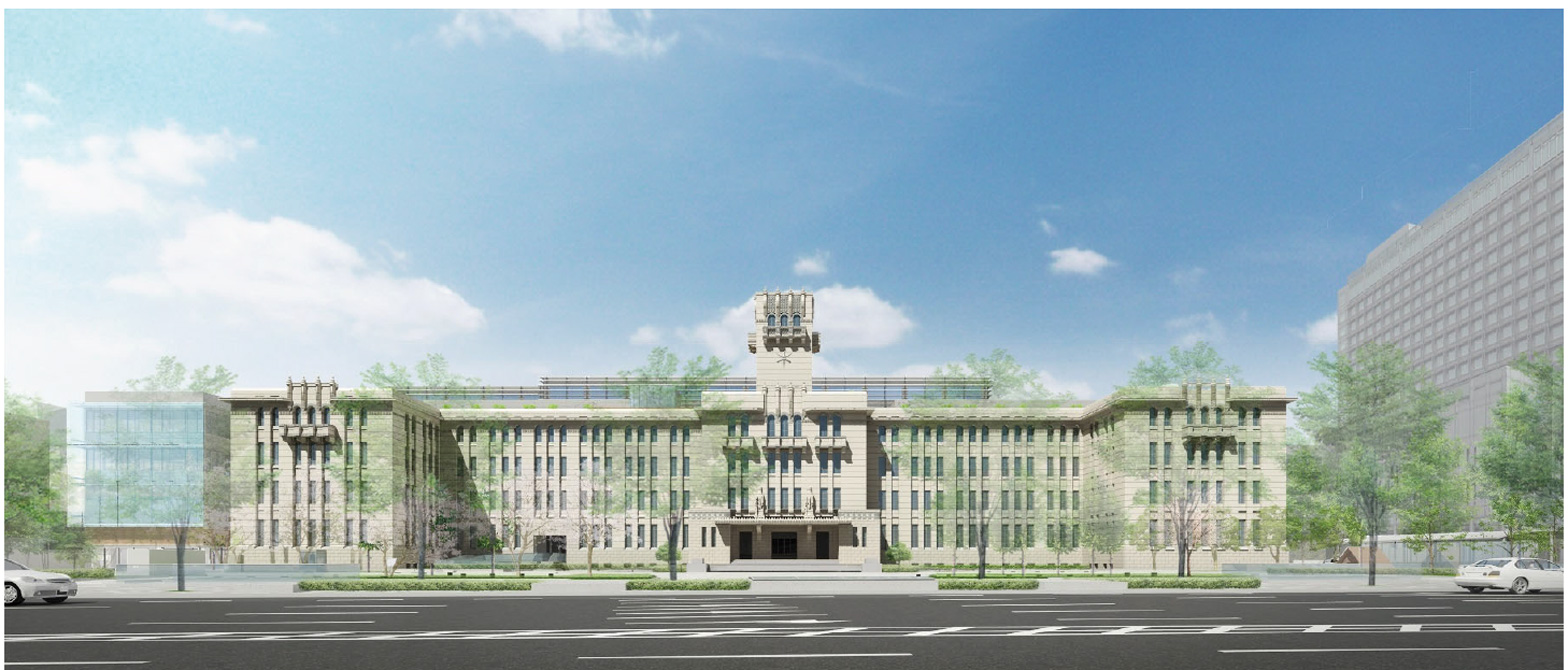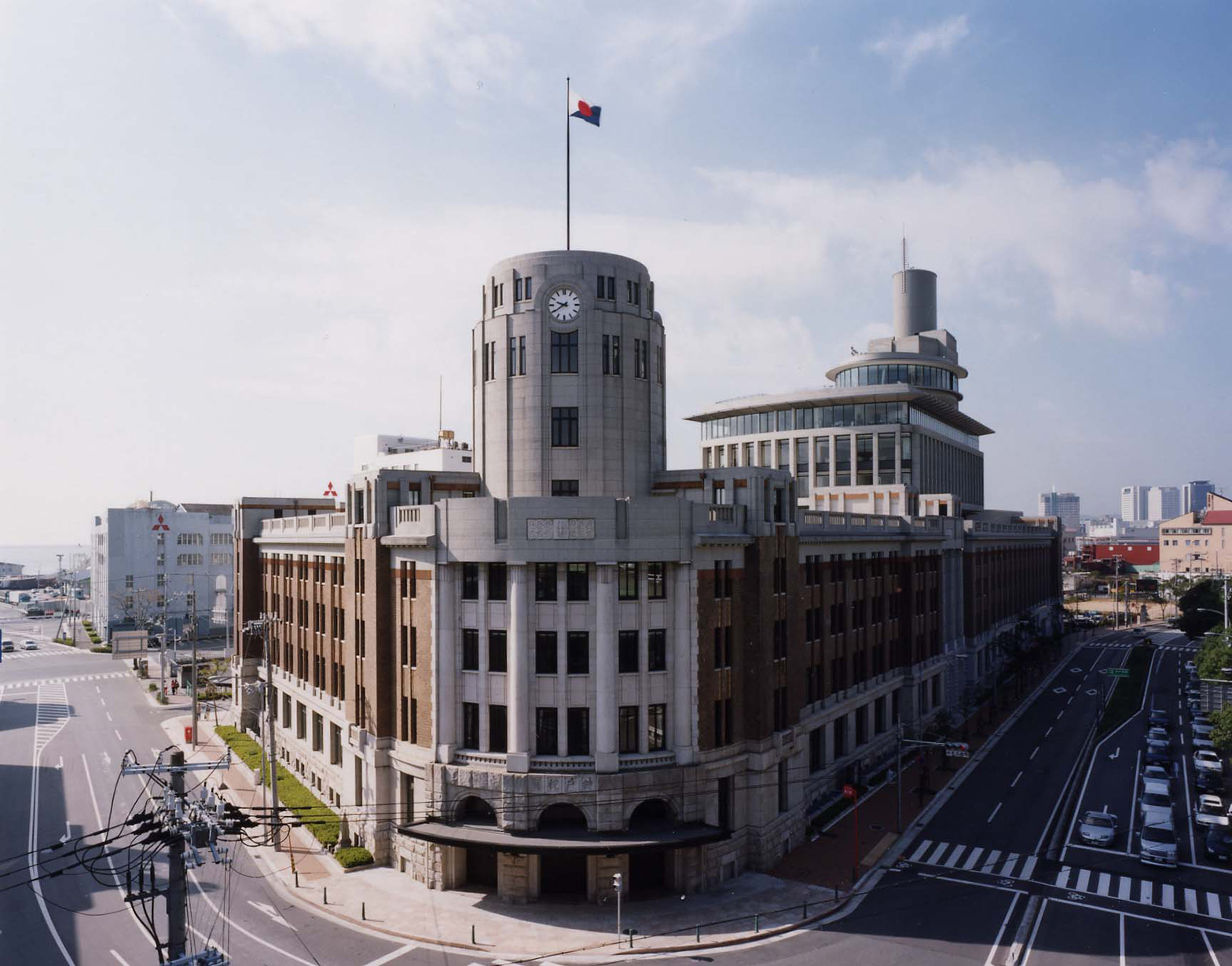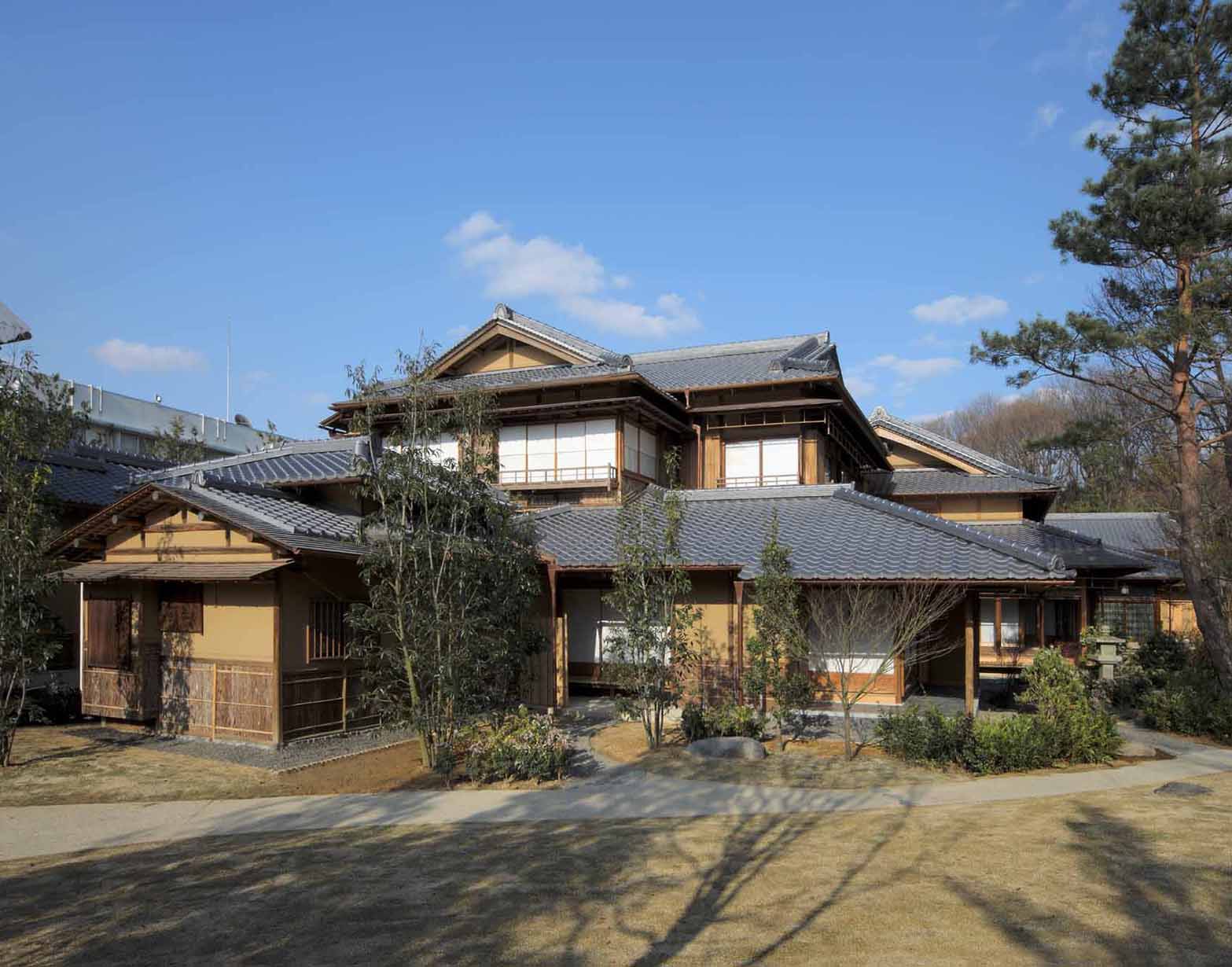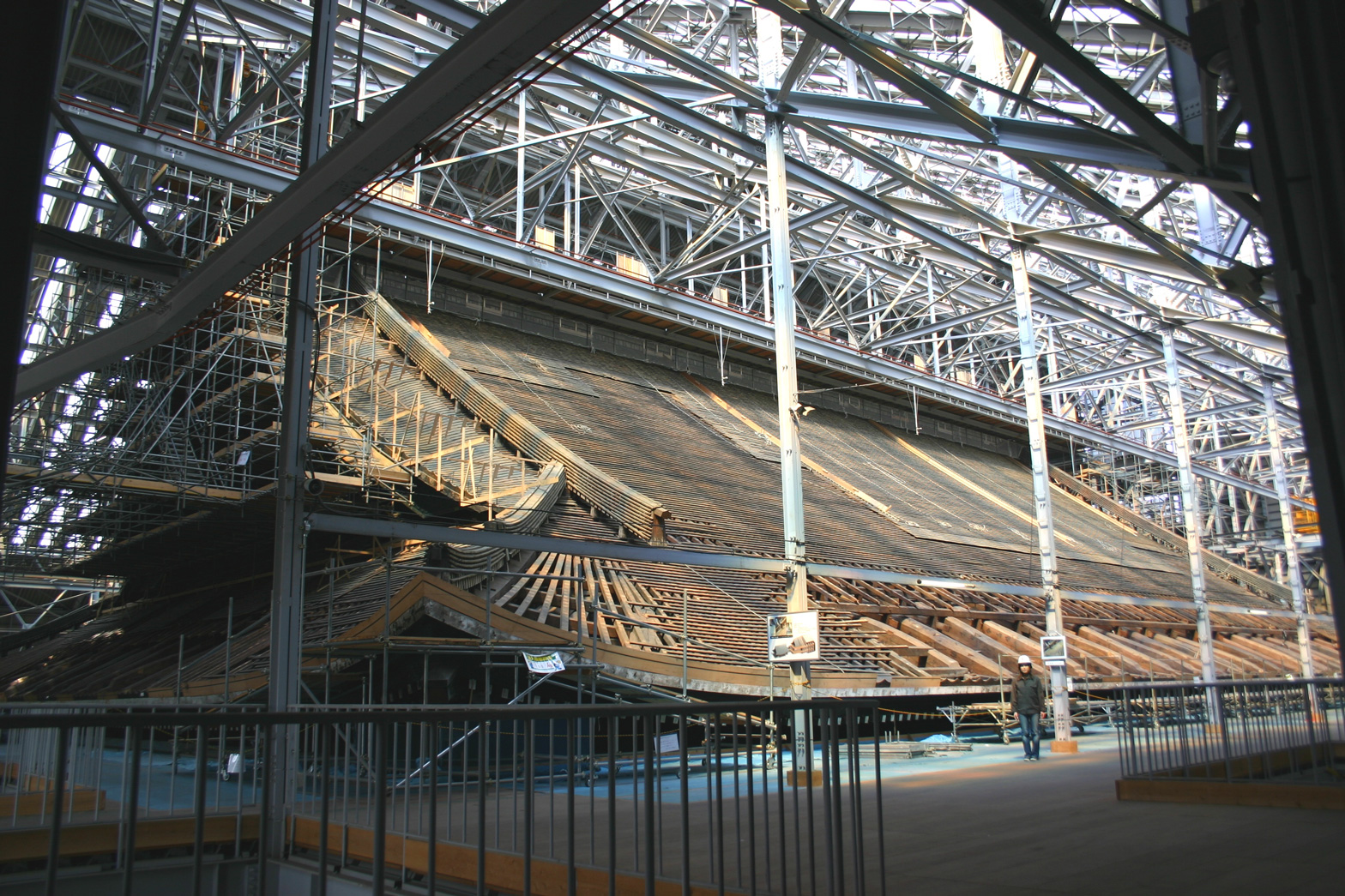Connecting Buildings with Cultural Value to the Future
Preserving the dynamics of modern structures with cultural value to connect hearts and minds and create intimate connections
Scroll Down
In recent years, there has been an active movement to dynamically preserve and use not only traditional wooden buildings, but modern-day buildings that possess cultural value as well. Nikken Sekkei is planning to establish a new team to work exclusively on this as a new area of business. We spoke to team leader, Takao Nishizawa, an Associate Facility Consultant at the Heritage Business Lab in the Client Relations & Solutions Department at Nikken Sekkei, about the future of preserving buildings with cultural value in Japan and what roles are required.
TAG
Targeting modern-day buildings with steel structures and reinforced concrete for preservation as cultural properties requires a new level of know-how
Following the Great Hanshin-Awaji Earthquake in 1995, the movement to seismically retrofit buildings gathered speed nationwide. Traditionally, the preservation and renovation of cultural properties focused primarily on cultural properties, such as shrines and temples, which was carried out by government agencies and design supervision organizations specializing in the area of traditional wooden structures.
However, in recent years, momentum has built for the continuous use of modern buildings from the Meiji era that have been designated as important cultural properties, such as brick buildings and equipping buildings with elevators, while they are being repaired or renovated. The Agency for Cultural Affairs launched a collaborative meeting of experts, which compiled a report in 2018 on ways to preserve and utilize these buildings.
These modern-day buildings have a number of performing assets owned by public facilities and companies. For those who have been engaged in preserving cultural properties, such as steel and reinforced concrete structures, as well as buildings that are a mixture of steel frames and reinforced concrete, it is a field in which few have experience, and for Nikken Sekkei, this area is one in which we have the most experience.
One-stop services, from business planning to design supervision and operational support
For clients who are considering renovating a building with cultural value but are not familiar with the process and costs involved, Nikken Sekkei alleviates their sense of anxiety by utilizing the project management know-how developed through our experience in handling large-scale projects.
In addition, one of Nikken Sekkei’s strengths is that we posses a wealth of knowledge and know-how in terms of practical experience, such as registered on teams in Osaka Prefecture and Kyoto City as chief engineers in renovating cultural properties and heritage managers trained by local governments. We have established networks with experts in close cooperation with the Agency for Cultural Affairs and the Japan Tourism Agency that we utilize in our work.
Under this type of system, we offer one-stop services from proposing business plans that include a view for drastically diverting use, to designs for new construction, extensions and renovations, and operational support after construction, which allow modern-day buildings to continue to be used in the future. This one-stop service also includes practical solutions, such as cost control for large-scale renovations.
In addition, despite the restrictions often associated with renovations, the system for designating cultural properties also has its advantages, such as subsidies and tax incentives. Nikken Sekkei can handle this precisely because of our extensive expertise in this field, such as the preparation and application of subsidies for clients and the development and recommendations on survey reports that require careful research.
Photo: International Library of Children's Literature, National Diet Library
Inheriting and regenerating the will of our ancestors
Through the lifecycle design as we call it, we aim to take facilities, such as land, buildings and equipment that are the management resources of clients and turn them into true management resources that help the client achieve their business activities and strategies. When handling buildings that have particular value as cultural assets, it is not uncommon for us to come into contact with the lofty aspirations of that original time when they were built. For example, Nagoya TV Tower, which has been undergoing an 18-month renovation since January 2019, was constructed by Tachu Naito, often called the father of earthquake-resistant structures and an expert in towers, in 1954 as Japan’s first tower even before Tokyo Tower. It was built in the center of a large urban-planned boulevard with an elegant A-line, similar to the Eiffel Tower. I can feel the intentions of those involved at that time in “creating Japan”, something that went beyond the mere construction of buildings and focused instead on the design philosophy of building the best tower in Japan, even in the face of numerous difficulties, such as significantly pulling out the foot of the tower using a steel-reinforced concrete cross-arch construction and installing a low-rise elevator in anticipation of the construction of a subway system in the future.
Today, there is an urgent need to secure earthquake resistance structures in preparation for the Nankai Trough earthquake. We develop seismic isolation plans that reduce costs while maintaining the appearance of a building’s exterior and increase effective areas by adding low-rise EV buildings, while continuing to provide support to both inherit and pass on cultural values.
 New Kyoto City Hall (currently under construction)
New Kyoto City Hall (currently under construction)
Nikken Sekkei aims to both preserve and create new added value by matching traditional and modern values.
Nikken Sekkei has long been responsible for preserving and renovating designs to connect the value of historical buildings to the future.
For example, our experience handling a variety of projects tailored to the needs of our clients, such as the minimal seismic reinforcement of the Hiroshima Peace Monument (Atomic Bomb Dome) accomplished without changes to its external appearance; the preservation and renovation of the former Kobe Customs Headquarters, a familiar symbol to the residents of the city as the symbol of Kobe Port; the relocation, restoration and renovation of Konosuke Matsushita’s private residence, Kouunsou, carried out to pass on and preserve the sense of values at the time the company was founded; and the restoration of Founder's Hall, Amida Hall and Founder’s Hall Gate, Shinshū Ōtani-ha (Higashi Honganji), a project recognized for its cost transparency, have supported Nikken Sekkei’s heritage business.
 Kobe Customs Headquarters (completed in 1999)
Kobe Customs Headquarters (completed in 1999)
 Kouunsou (relocation, restoration and renovations completed in 2009, medium- and long-term repair plan for 2018)
Kouunsou (relocation, restoration and renovations completed in 2009, medium- and long-term repair plan for 2018)
 Roof restoration work at Founder's Hall, Shinshū Ōtani-ha (Higashi Honganji)
Roof restoration work at Founder's Hall, Shinshū Ōtani-ha (Higashi Honganji)
There are high expectations on organizational offices, such as Nikken Sekkei, that have a broad range of experience in the regeneration and use of modern-day buildings as well as traditional wooden buildings. We are planning to publicize these activities inside the company and are working to expand specialized teams.
Japan also has an advantage in overseas expansion as an earthquake-prone country with world-leading seismic isolation and seismic control design technology. In addition to Taiwan, China and Korea, Portugal and the south of France and Italy in Europe are also countries with frequent earthquakes, so we can expect greater demand for this technology in the future.
Through these activities, I hope that we can share the values of Japanese people who place great value on the thoughts and ideals that underly tradition and history.
------
The heritage business is possible only because of the organizational power of Nikken Sekkei, a company with experts on staff qualified in the area of cultural assets and a track record of handling a wide-range of cultural properties from wooden to modern-day buildings, as well as almost daily collaboration with the Agency for Cultural Affairs and cultural property specialists. The new challenge for Nikken Sekkei, which is engaged in connecting traditional cultural heritage buildings to the future, is also relevant to the idea behind the United Nations Sustainable Development Goal 11 (Sustainable cities and communities). Efforts to preserve and utilize modern-day buildings while also retaining the value of their cultural properties will not only meet the needs of clients, but also offer solutions to social issues, such as preserving cultural heritages and promoting sustainable urban development.
Photo 1 and 5 (left): Kobe Customs Headquarters (Photo by Kiyohiko Higashide)
Photo 2: International Library of Children's Literature, National Diet Library (Photo by Shinkenchiku-sha)
Photo 3: Nagoya TV Tower (Photo by Yoshihiko Takita, Takita Photo Atelier)
Photo 4: New Kyoto City Hall
Photo 6 (right) Kouunsou (Photo by Osamu Murai, Studio Murai)
Photo 7: Founder's Hall, Shinshū Ōtani-ha (Higashi Honganji) (Photo by Nikken Sekkei)
